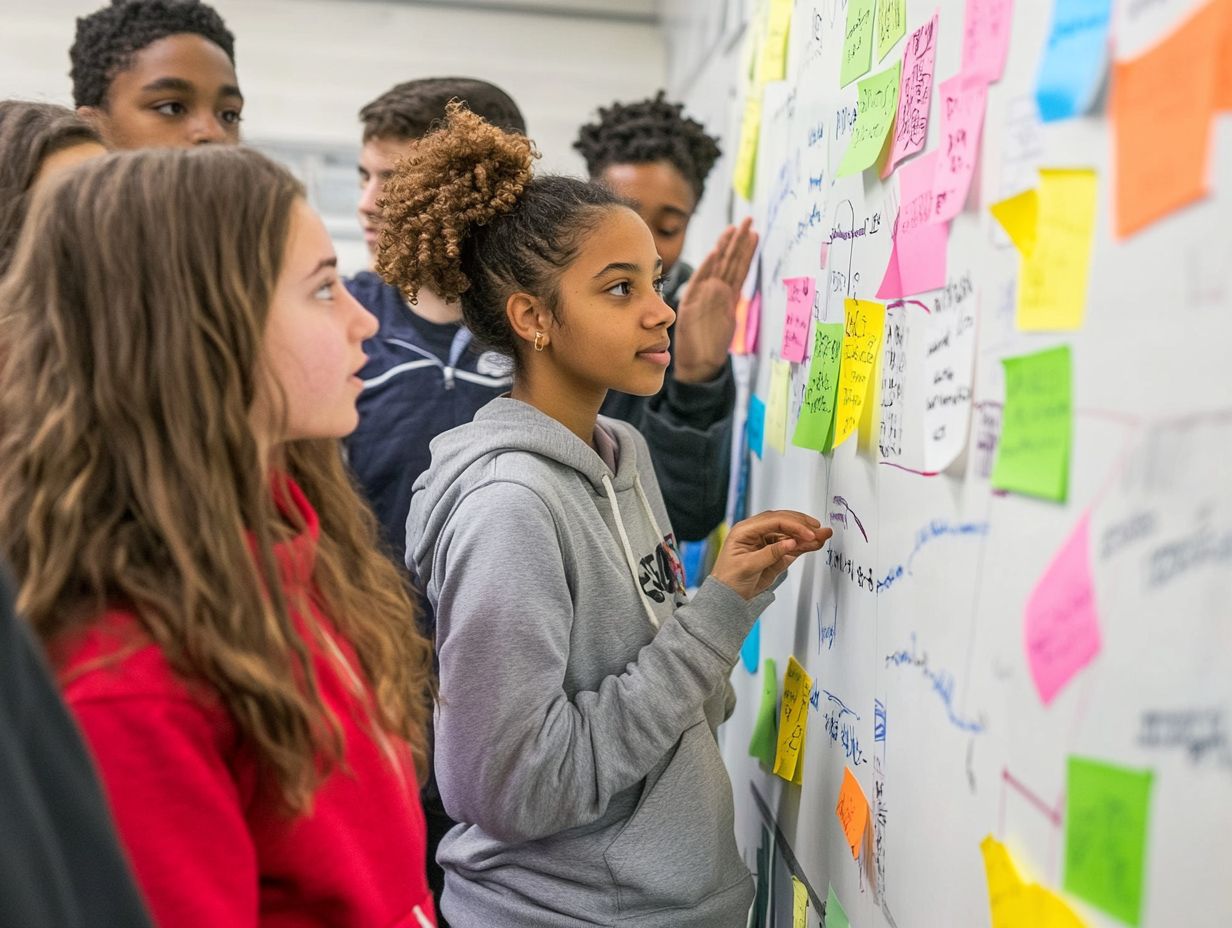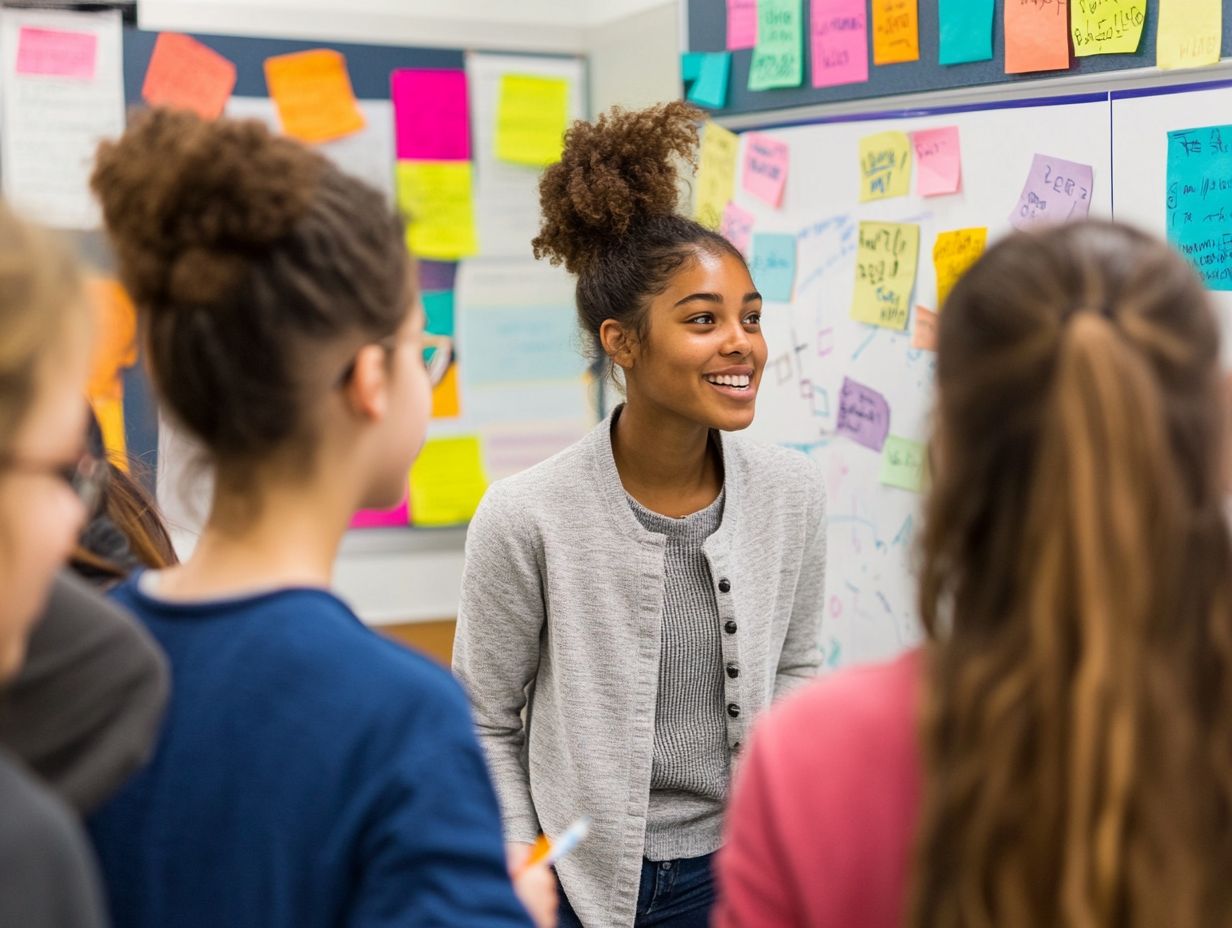5 Tips for Engaging with Local Students
Engaging with local students transcends mere benefit; it’s a dynamic opportunity to strengthen community ties and invest in the future.
This piece outlines five actionable strategies that will enable you to effectively connect with students ranging from active community involvement to providing invaluable internship experiences.
It delves into the significance of these relationships for your business or organization, addresses potential challenges you may encounter, and offers methods to assess your success.
Whether your goal is to elevate your brand or contribute positively to the community, these insights will empower you to make a meaningful impact.
Contents
- Key Takeaways:
- 1. Get Involved in the Community
- 2. Partner with Local Schools and Organizations
- 3. Offer Internship Opportunities
- 4. Host Events and Workshops
- 5. Utilize Social Media and Local Advertising
- Why Is It Important to Engage with Local Students?
- What Are the Benefits of Building Relationships with Local Students?
- How Can Engaging with Local Students Help Your Business or Organization?
- What Are Some Challenges to Engaging with Local Students and How Can They Be Overcome?
- How Can a Business or Organization Measure the Success of Their Engagement with Local Students?
- What Are Some Best Practices for Engaging with Local Students?
- Frequently Asked Questions
- 1. What are 5 tips for engaging with local students?
- 2. How can getting to know the community help with engaging local students?
- 3. Can using relevant examples really make a difference in engaging with local students?
- 4. Why is it important to involve students in decision making?
- 5. How can collaborating with local organizations benefit engaging with local students?
- 6. Are interactive activities really necessary for engaging with local students?
Key Takeaways:

- Engage with your community to build strong relationships with students.
- Collaborate with local schools to create engagement opportunities.
- Provide internships for valuable hands-on learning experiences.
1. Get Involved in the Community
Getting involved in the community is crucial for nurturing a sustainable environment. This allows you, as a student, to become an active learner and a responsible citizen.
By immersing yourself in local initiatives be it service projects, workshops, or mentorship programs you can help cultivate a supportive ecosystem. These experiences not only enrich your educational journey but also foster a profound sense of belonging and responsibility within you.
Collaborations aimed at shared goals allow you to appreciate your surroundings while enabling you to make a positive impact. Tapping into local resources like libraries, parks, and community centers can elevate your educational opportunities, making learning feel more relevant and impactful.
Such partnerships are essential for encouraging you to take ownership of your education, creating an environment where you can truly thrive and grow.
2. Partner with Local Schools and Organizations
Forging partnerships with local schools and organizations can significantly enhance educational experiences. This offers you the chance to provide opportunities for students to engage in education tied to the local area and tackle real-world problems.
These partnerships spark an exciting learning environment where students learn from community members, participate in hands-on projects, and cultivate the critical thinking skills vital for their future. For example, a partnership between a local business and a high school can lead to internships that enable students to apply their classroom knowledge in a professional environment.
Such initiatives not only nurture an inclusive culture by addressing diverse community needs but also illustrate how local entrepreneurs can serve as mentors and resource providers, enriching the educational landscape and driving meaningful social change.
3. Offer Internship Opportunities
Offering internship opportunities allows students like you to immerse yourself in hands-on experiences while making meaningful contributions to your communities through real-world problem-solving and collaborative projects.
These internships can include a broad range of fields, from marketing and finance to environmental science and social work, seamlessly aligning your academic knowledge with practical applications. By stepping into these roles, you not only sharpen your skills but also gain invaluable insights into the inner workings of local businesses.
As you engage with specific challenges these organizations face, a mutual benefit emerges; you cultivate confidence and networking prowess, while businesses benefit from your fresh perspectives and innovative solutions.
Ultimately, this symbiotic relationship nurtures a stronger community, fostering growth and collaboration that can lead to sustainable development and long-term success for everyone involved.
4. Host Events and Workshops

Hosting events and workshops offers you a prime opportunity for community engagement. They encourage students to dive into interactive activities that promote collaboration and spark social change.
Gatherings can include educational seminars, creative art festivals, skill-building workshops, and cultural celebrations. Each event serves a unique purpose in strengthening community connections.
By inviting a diverse array of speakers and incorporating hands-on experiences, you enable participants to learn from one another, fostering a deeper appreciation for various viewpoints. These activities enhance classroom strategies by bringing lessons to life.
They also cultivate an inclusive culture where everyone is enabled to make their voice heard. The shared experiences created through these engagements are vital in building a sense of belonging, essential for personal and academic growth.
5. Utilize Social Media and Local Advertising
Utilizing social media and local advertising can significantly enhance your connections within the community. This fosters student engagement and promotes the initiatives of community organizations across various platforms.
By crafting messages that resonate with the unique values and interests of your community, you can cultivate a genuine sense of belonging among local residents. Leveraging targeted campaigns and eye-catching visuals on platforms like Instagram and Facebook will effectively draw attention to your upcoming events.
Act now with a thoughtful approach to social media and local advertising to expand your reach and build lasting relationships! Collaborating with local influencers and businesses can amplify your efforts, creating a more personable connection that encourages active participation.
Why Is It Important to Engage with Local Students?
Engaging with local students is vital. It shapes them into responsible citizens and strengthens our community s identity. This collaboration fosters an inclusive culture through partnerships and shared learning experiences.
This interaction creates a ripple effect that benefits various community programs focused on social welfare and education. Initiatives like mentorship programs and community service projects enable students to adopt leadership roles.
These roles can range from team-based methods that focus on agreement to transformational styles that inspire collective action. For instance, when students participate in environmental clean-ups or food drives, they address local issues while cultivating a sense of responsibility and belonging.
By fostering a culture where every voice is valued, you contribute to laying the groundwork for impactful community engagement.
What Are the Benefits of Building Relationships with Local Students?
Building relationships with local students offers a wealth of benefits, including enhanced engagement, increased access to community resources, and the achievement of shared goals that address a variety of important issues.
When you encourage students to actively connect with their local peers, they often develop a stronger sense of ownership over their projects. This involvement deepens their commitment to their work and helps them cultivate essential skills like teamwork and problem-solving.
Engaging in community service initiatives enriches their learning experience, allowing them to apply theoretical knowledge to real-world challenges. These collaborative efforts strengthen community ties and inspire students to take an active role in shaping their surroundings.
This fosters a sense of accountability and social responsibility that will serve them well into the future.
How Can Engaging with Local Students Help Your Business or Organization?
Engaging with local students can significantly enhance your business or organization. It allows you to harness their contributions to create important community projects.
This involvement boosts your visibility within the community. It also presents opportunities to offer valuable financial literacy courses, which help students manage money effectively and equip them with essential skills for their futures.
By cultivating a culture of social responsibility, you show your commitment to education and the well-being of the community.
Collaborating on projects provides you with fresh perspectives while students gain invaluable real-world experience, crafting a mutually beneficial environment.
This synergy can drive brand loyalty, attract new customers, and elevate your organization s reputation in the eyes of stakeholders.
What Are Some Challenges to Engaging with Local Students and How Can They Be Overcome?
Engaging with local students can present challenges, such as varying levels of enthusiasm and different leadership styles. However, you can navigate these hurdles with targeted strategies.
Organizations often face issues like misaligned expectations and a lack of understanding of student needs. These can significantly impact the success of outreach efforts. Create tailored programs now to resonate with students interests and aspirations.
Employing effective communication strategies is key. Leverage social media and host informal gatherings to cultivate a more welcoming atmosphere.
Use continuous feedback to adapt your initiatives based on what students say, ensuring that your engagement remains dynamic and relevant.
How Can a Business or Organization Measure the Success of Their Engagement with Local Students?
Measuring the success of your engagement with local students involves employing effective assessment methods to evaluate their participation and the overall impact of your partnerships on the community.
This process includes a variety of metrics and tools that offer valuable insights into both the quantitative and qualitative aspects of engagement. Surveys specifically designed to capture students’ experiences can uncover their perceptions and interests.
Feedback from community organizations is essential for understanding how well your initiatives resonate in the local context. By analyzing project outcomes such as academic performance or participation rates you gain a deeper understanding of the effectiveness of these partnerships.
This approach not only facilitates continuous improvement but also enables you to make more informed decisions for future engagements.
What Are Some Best Practices for Engaging with Local Students?
Implementing best practices for engaging with local students can lead to successful and sustainable community engagement, fostering student participation and an inclusive culture across various initiatives.
Create interactive activities that resonate with students’ interests and establish clear communication channels to significantly enhance participation. Offering opportunities for student ownership nurtures leadership skills and makes them feel valued in the process.
Facilitating workshops, mentorship programs, and collaborative projects cultivates a sense of belonging and responsibility. These approaches bridge gaps between students and organizations, paving the way for innovative ideas that benefit the entire community.
Ultimately, this promotes a vibrant and dynamic environment where every voice is heard.
Frequently Asked Questions
1. What are 5 tips for engaging with local students?
1. Get to know the community by learning about local culture and customs. This helps you engage students more effectively.
2. Use local examples to make lessons relatable. This shows you respect their culture and experiences.
3. Involve students in decision-making. When they have a say, they feel more invested in their learning.
4. Partner with local organizations for unique experiences. This fosters community involvement and responsibility.
5. Incorporate interactive activities like group projects. They encourage participation and build communication skills.
2. How can getting to know the community help with engaging local students?
Getting to know the community helps you understand the interests and needs of local students. This allows you to tailor your approach for better engagement.
3. Can using relevant examples really make a difference in engaging with local students?
Absolutely! Using relevant examples makes lessons relatable. Don’t miss out on connecting with your students!
4. Why is it important to involve students in decision making?
Involving students gives them a sense of ownership in their learning. This can increase motivation and help them think clearly and solve problems.
5. How can collaborating with local organizations benefit engaging with local students?
Collaborating with local organizations provides unique experiences for students. It deepens their understanding of the community and encourages responsibility.
6. Are interactive activities really necessary for engaging with local students?
Interactive activities aren’t strictly necessary, but they can be highly effective. They promote active learning and help build relationships among students.







